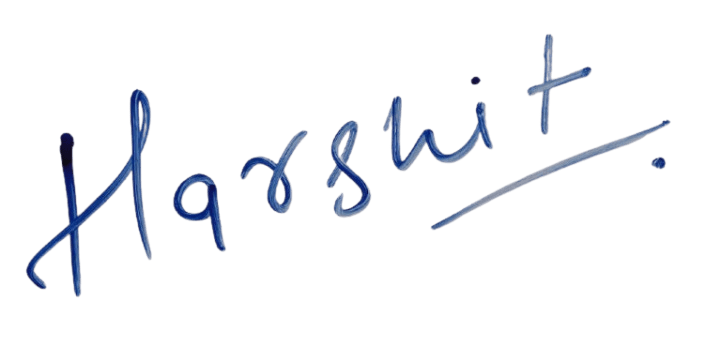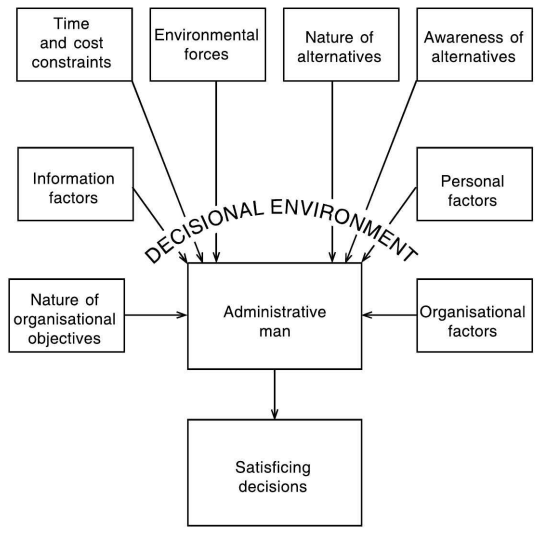1. DECISION-MAKING WITH SPECIAL REFERENCE TO H. SIMON
1.1. Meaning
1.2. Bases or Factors
1.3. Process or Stages
1.4. Classification
1.5. Models
2. COMMUNICATION
2.1. Significance
2.2. Definition
2.3. Types
2.4. Media
2.5. Theoretical Contributions
2.6. Process
2.7. Channels or Networks
2.8. Barriers and Problems
2.9. Elements or Principles
3. CONTROL
3.1. Definition
3.2. Process
3.3. Techniques
3.4. Theoretical Contributions
4. LEADERSHIP THEORIES
4.1. Meaning
4.2. Definition
4.3. Nature
4.4. Sources of Influence
4.5. Styles
4.6. Functions
4.7. Qualities
4.8. Theories or Approaches
5. THEORIES OF MOTIVATION (MASLOW AND HERZBERG)
5.1. Definition
5.2. Theories/Models

When I began my college journey, I often felt lost. Notes were scattered, the internet was overflowing with content, yet nothing truly matched the needs of university exams. I remember the frustration of not knowing what to study, or even where to begin.
That struggle inspired me to create Examopedia—because students deserve clarity, structure, and reliable notes tailored to their exams.
Our vision is simple: to make learning accessible, reliable, and stress-free, so no student has to face the same confusion I once did. Here, we turn complex theories into easy, exam-ready notes, examples, scholars, and flashcards—all in one place.
Built by students, for students, Examopedia grows with your feedback. Because this isn’t just a platform—it’s a promise that you’ll never feel alone in your exam journey.
— Founder, Examopedia
Always Yours ♥!
Harshit Sharma

Give Your Feedback!!
Topic – Administrative Behaviour (Notes)
Subject – Political Science
(Public Administration)
Table of Contents
DECISION-MAKING WITH SPECIAL REFERENCЕ ТО Н. SIMON
Meaning
Webster’s Dictionary defines decision-making as “the act of determining in one’s own mind upon an opinion or course of action.”
According to Robert Tannenbaum, decision-making “involves a conscious choice or selection of one behaviour alternative from among a group of two or more behaviour alternatives.”
Terry defined decision-making as “the selection of one behaviour alternative from two or more possible alternatives.”
Thus, decision-making is the process of choosing one alternative from among various alternatives and is essentially problem-solving in nature. It is closely related to policy-making, but they are distinct. Terry clarified: “A decision is usually made within the guidelines established by policy. A policy is relatively extensive, affects many problems, and is used repeatedly. In contrast, a decision applies to a particular problem and is of non-continuous use.”
Classical thinkers did not attach much importance to decision-making as an all-pervasive activity in management functions. Fred Luthans noted: “Classical theorists such as Fayol and Urwick focused on decision-making only to the extent that it affects delegation and authority, while Taylor alluded to the scientific method as an ideal approach.”
The first comprehensive analysis of decision-making was by Chester Barnard: “The processes of decision are largely techniques for narrowing choice.”
Seckler-Hudson observed: “Decision-making in government is a plural activity. One individual may pronounce the decision, but many contribute to the process. It is part of the political system.”
Millet identified three factors influencing decision-making:
(i) Personal differences among individuals (decisive vs indecisive)
(ii) Role of knowledge in decision-making
(iii) Institutional and personal limitations restricting decisions
Simon’s Concept of Decision-Making
Herbert A. Simon defined decision-making as “the optimum rational choice between alternative courses of action.” Decision-making pervades the entire organisation, making it a structure of decision-makers. He equated administration with decision-making, as every aspect of administration revolves around it.
Simon viewed decision-making as an all-embracing activity, covering all administrative functions described as POCCC (Fayol) and POSDCORB (Gulick). He criticized the classical approach, arguing that principles of administration were often mutually contradictory ‘proverbs’. He stressed that before establishing principles, one must describe exactly how an administrative organisation functions.
Simon’s concept of administration emphasizes:
(i) Decision-making approach as an alternative to the classical principles/structural approach
(ii) Empirical (value-free) approach versus normative study of administration
Bases or Factors
Seckler-Hudson identified twelve factors influencing decision-making: legal limitations, budget, mores, facts, history, internal morale, anticipated future, superiors, pressure groups, staff, nature of programme, subordinates.
Simon’s Bases of Decision-Making:
Every decision relies on factual premises and value premises.
-
Factual premises – statements of reality, empirically testable
-
Value premises – expressions of preference, subjective
Decisions can be:
-
Value Judgements – choosing final goals (value component predominates)
-
Factual Judgements – implementing goals (factual component predominates)
Process or Stages
Terry’s sequence:
(i) Determine the problem
(ii) Acquire background information and viewpoints
(iii) State the best course of action
(iv) Investigate propositions and tentative decisions
(v) Evaluate tentative decisions
(vi) Make and implement the decision
(vii) Follow-up and modify if needed
Simon’s Stages:
-
Intelligence Activity – identifying situations requiring decisions, surveying the economic, technical, political, and social environment
-
Design Activity – inventing, developing, and analyzing alternative courses of action
-
Choice Activity – selecting a particular course from alternatives
These stages align with John Dewey’s problem-solving stages:
(a) What is the problem? (b) What are the alternatives? (c) Which alternative is best?
Classification
Programmed and Non-Programmed Decisions (Simon):
-
Programmed – repetitive, routine, handled by established procedures
-
Traditional: habit, clerical routine, organisation structure
-
Modern: operations research, computer simulation, sub-goals, information channels
-
-
Non-Programmed – novel, ill-structured, policy decisions
-
Traditional: judgement, intuition, rules of thumb, executive training
-
Modern: heuristic techniques, training, heuristic computer programs
-
Gresham’s Law of Planning: Routine decisions postpone or overshadow non-programmed decisions.
Other Classifications:
-
Generic and Unique Decisions (Drucker) – similar to programmed/non-programmed
-
Organisational and Personal Decisions (Barnard) – by executive official capacity vs individual capacity
-
Policy and Operating Decisions – strategic (top management) vs tactical (lower management)
-
Individual and Group Decisions – responsibility borne individually or collectively
Models
There are four models of decision-making, viz. Simon’s Bounded Rationality Model, Lindblom’s Incremental Model, Etzioni’s Mixed-Scanning Model, and Dror’s Optimal Model.
Simon’s Bounded Rationality Model
Herbert Simon analysed the rationality aspect of the decision-making process. His model, also known as the Behavioural Alternative Model, provides a more realistic alternative to the classical economic rationality model.
Simon defined rationality as “the selection of preferred behaviour alternatives in terms of values whereby the consequences of behaviour can be evaluated.” He distinguished various types of rationality:
-
Objectively rational: the correct behaviour for maximising given values in a situation.
-
Subjectively rational: maximises attainment relative to the actual knowledge of the decision-maker.
-
Consciously rational: when the adjustment of means to ends is a conscious process.
-
Deliberately rational: when adjustment of means to ends is deliberately effected by the individual or organisation.
-
Organisationally rational: oriented to the organisation’s goals.
-
Personally rational: oriented to the individual’s goals.
Simon argued that total rationality is impossible in administrative behaviour, making maximising decisions unattainable. Instead, bounded rationality leads to satisficing decisions, where the decision-maker chooses an alternative that is good enough.
Factors leading to bounded rationality include:
-
Dynamic nature of organisational objectives
-
Imperfect information and limited analytical capacity
-
Time and cost constraints
-
Environmental forces
-
Alternatives that cannot always be quantified
-
Unawareness of all possible alternatives and consequences
-
Personal factors like habits and preconceived notions
-
Organisational factors such as procedures, rules, and communication channels
Simon’s model contrasts the administrative man with the economic man:
-
Chooses satisficing rather than maximising alternatives
-
Recognises a simplified perception of the real world
-
Makes decisions without identifying all alternatives
-
Uses simple rules of thumb
Criticism: Chris Argyris argued that Simon overlooked intuition, tradition, and faith, while Norton E. Long and Philip Selznick noted that his separation of facts and values revisits the discredited politics-administration dichotomy.

Lindblom’s Incremental Model
Charles E. Lindblom, in The Science of Muddling Through (1959), proposed the incremental model, opposing Simon’s rational comprehensive model.
He highlighted practical limitations in decision-making, such as money, time, information, and politics, which shape administrative decisions. Decision-makers generally continue existing programmes with minor modifications, a process called incrementalism.
Other names: branch technique, successive limited comparisons, step-by-step decision-making. Lindblom introduced:
-
Marginal incrementalism: small adjustments based on past actions
-
Partisan mutual adjustment: negotiation among stakeholders
Etzioni’s Mixed-Scanning Model
Amitai Etzioni (1967) proposed the mixed-scanning model, combining elements of rational comprehensive and incremental models.
-
Criticised the rational model for impracticality
-
Addressed drawbacks of the incremental model:
-
Discourages social innovation, making it partisan
-
Unsuitable for fundamental decisions
-
The model integrates comprehensive analysis for major decisions with incremental adjustments for routine decisions.
Dror’s Optimal Model
Yehezkel Dror, in Public Policy-making Re-examined, proposed the optimal model of policy-making and policy analysis, combining economically rational and extra-rational elements.
Characteristics of Dror’s model:
-
Qualitative, not purely quantitative
-
Integrates rational and extra-rational elements
-
Based on economic rationality
-
Focused on metapolicy-making
-
Includes built-in feedback
The model has three phases: metapolicy-making, policy-making, and post-policy-making.
Dror advocates the development of policy science to address societal problems.
-
Policy issue knowledge: knowledge related to a specific policy
-
Policy-making knowledge: knowledge of the entire policy-making system
According to Rumki Basu, Dror urges judicious evaluation of goals, values, alternatives, costs, and benefits using maximum information and scientific technology, including extra-rational aids to enhance effective policy analysis.
Public Administration Membership Required
You must be a Public Administration member to access this content.
